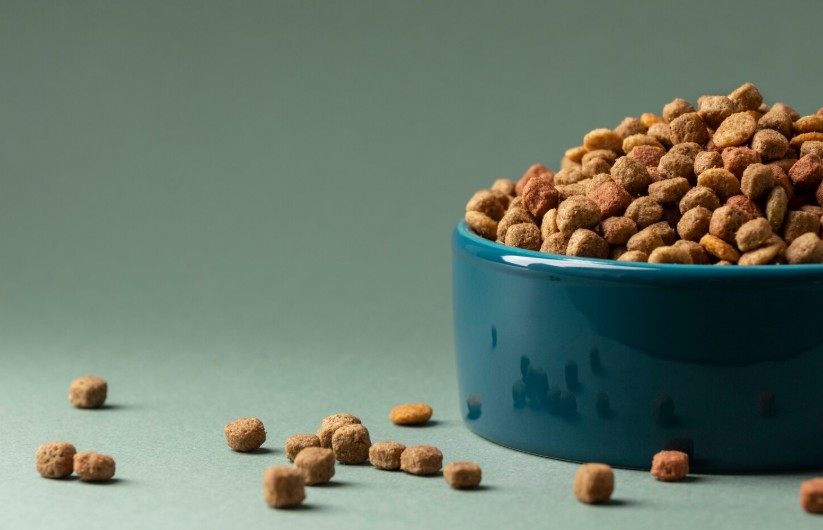Introduction
As pet owners, we all want the best nutrition for our dogs. The market is flooded with countless options, each promising optimal health and longevity. Among these, grain-free dog food has become increasingly popular. Advertised as a healthier alternative to traditional kibble, it promises benefits like improved digestion, shinier coats, and reduced allergies. But is it really the best choice for your furry friend? At Pets World, we’ve compiled expert insights and tips to help you make an informed decision about your dog’s diet.
What Is Grain-Free Dog Food?
Grain-free dog food is exactly what it sounds like—dog food formulated without grains such as wheat, corn, barley, or rice. Instead, it relies on alternative sources of carbohydrates and protein, such as potatoes, peas, lentils, or chickpeas. Proponents claim that this type of food mimics the natural diet of wild dogs, which do not consume processed grains.
Some pet owners switch to grain-free formulas when their dogs show signs of food allergies or sensitivities. Dogs with digestive issues, skin problems, or low energy may benefit from eliminating grains from their diet. However, it’s important to note that not all dogs require a grain-free diet, and some may thrive better on traditional grain-inclusive foods.
Potential Benefits of Grain-Free Dog Food
- Easier Digestion
Dogs with grain sensitivities or allergies may experience bloating, diarrhea, or gas when consuming grain-heavy diets. Grain-free dog food often replaces these with easily digestible carbohydrates like sweet potatoes or peas, which can be gentler on a sensitive stomach. - Improved Skin and Coat
Grains sometimes contain gluten or other components that can trigger allergic reactions in dogs. Switching to a grain-free formula can help reduce itching, redness, and hair loss, leading to a shinier, healthier coat. - Higher Protein Content
Many grain-free dog foods have a higher concentration of meat or fish, which provides essential amino acids for muscle development and overall vitality. This can be particularly beneficial for active dogs or working breeds.
Expert Insights and Considerations
While grain-free dog food offers potential advantages, experts caution that it’s not universally better for all dogs. Veterinarians emphasize that a balanced diet is more important than simply eliminating grains.
- Nutritional Balance: Some grain-free formulas may lack essential nutrients, leading to deficiencies over time. Look for foods approved by the Association of American Feed Control Officials (AAFCO) to ensure complete nutrition.
- Heart Health Concerns: Recent studies have suggested a link between certain grain-free diets and canine dilated cardiomyopathy (DCM), a heart condition in dogs. While the exact cause is still under investigation, it’s crucial to consult your veterinarian before making a permanent switch.
- Ingredient Quality: Grain-free doesn’t automatically mean healthier. Always check ingredient labels. High-quality protein sources and natural ingredients are key to your dog’s health.
Tips for Choosing the Right Grain-Free Dog Food
- Know Your Dog’s Needs
Every dog is unique. Age, size, breed, and activity level all play a role in determining the best diet. Puppies, adult dogs, and senior dogs have different nutritional requirements, and the right grain-free formula should meet these needs. - Check the Protein Source
Look for real meat or fish as the primary ingredient. Avoid foods that rely heavily on plant proteins, as these may not provide the complete amino acid profile dogs require. - Monitor Your Dog’s Health
After switching to grain-free dog food, monitor your pet closely. Observe changes in digestion, energy levels, coat condition, and overall behavior. Any sudden changes should prompt a consultation with your vet. - Transition Gradually
Switching diets abruptly can upset your dog’s stomach. Mix the new food with the old gradually over 7–10 days, increasing the new food’s proportion each day. - Consult Your Veterinarian
Before making any major dietary changes, speak with your vet. They can help determine whether grain-free dog food is appropriate for your dog and recommend specific brands or formulas.
When Grain-Free May Not Be Necessary
It’s important to understand that grain allergies in dogs are relatively rare. Many dogs do perfectly well on traditional, grain-inclusive diets that provide balanced nutrition. Unless your dog has a diagnosed sensitivity or allergy, grain-free dog food may not offer significant benefits.
Additionally, some grain-free formulas can be higher in calories due to alternative carbohydrate sources like potatoes and legumes. If your dog is prone to weight gain, this is another factor to consider.
Conclusion
Grain-free dog food has gained popularity for its potential digestive and skin benefits, as well as its high-protein content. However, it’s not a one-size-fits-all solution. At Pets World, we believe the most important factor is providing a balanced, nutrient-rich diet that meets your dog’s individual needs. Always consult your veterinarian before making dietary changes and choose high-quality formulas with complete nutrition.
Ultimately, whether you choose grain-free or traditional dog food, your dog’s health, happiness, and energy levels should guide your decision. With careful consideration and expert guidance, you can ensure your furry companion enjoys a healthy, vibrant life.





